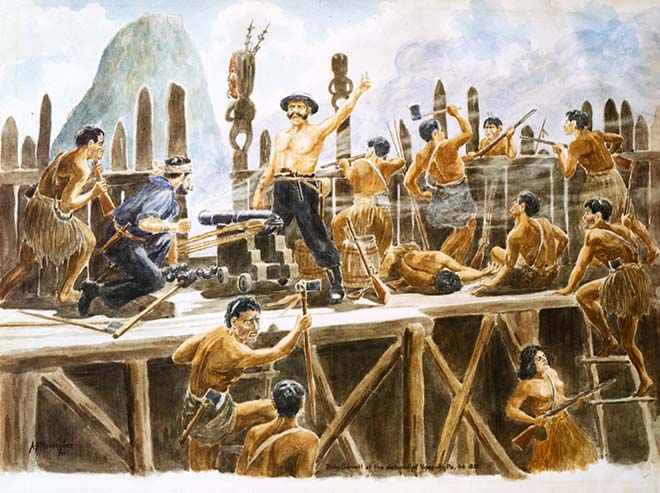
English-born Richard (Dicky) Barrett learned to speak Māori by trading in the Pacific and marrying into the Te Āti Awa tribe. In 1839 the New Zealand Company engaged him as a translator to help them negotiate the sale of land for settlement at Port Nicholson (later Wellington), Queen Charlotte Sound and Taranaki. However, the legality of these land claims, and Barrett's translating abilities, were later questioned. In 1843 he was challenged in the Court of Lands Claims by 20-year-old George Clarke Junior, who had learned Māori as a child.
Using this item
Puke Ariki – Taranaki Museum & Library
Reference:
A66.286
Watercolour by A. H. Massey
This item must not be copied or reproduced in any print or electronic media without the prior permission of Puke Ariki Museum and Library. It is the responsibility of the user of any material to obtain clearance from the copyright holder.





Add new comment